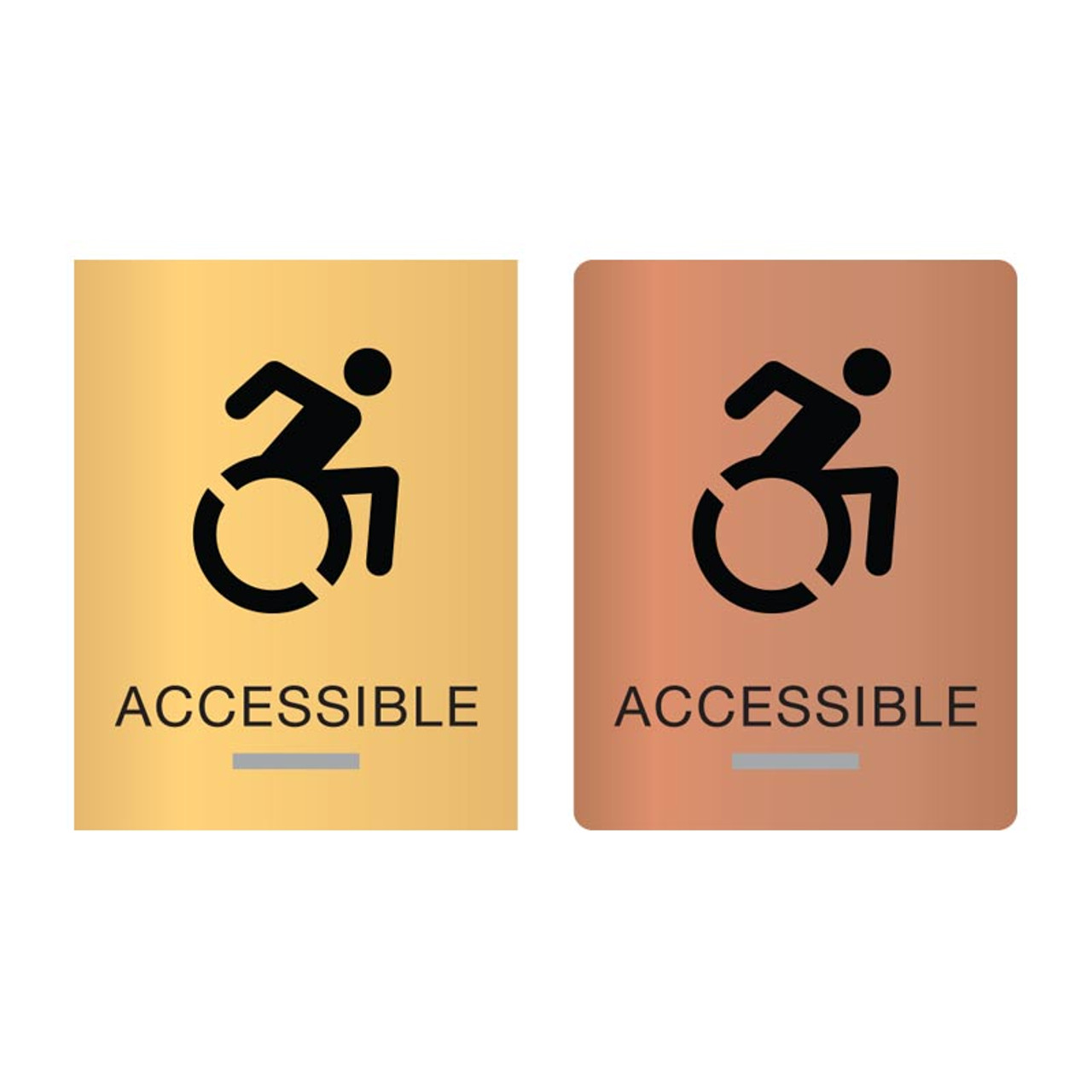How ADA Signs Enhance Ease Of Access for Everyone
How ADA Signs Enhance Ease Of Access for Everyone
Blog Article
ADA Signage: Ensuring Availability and Conformity in Public Spaces
ADA signage plays an indispensable duty in ensuring ease of access and conformity within public spaces, significantly contributing to a comprehensive atmosphere for individuals with disabilities. By adhering to ADA requirements, signs not only assists in navigating however also underscores an organization's dedication to diversity and equality. As we discover the subtleties of ADA signage, from responsive attributes to develop intricacies, it's vital to take into consideration exactly how these components coalesce to support the civil liberties of all individuals. What are the usual pitfalls companies encounter in preserving compliance, and just how can future fads in signage continue to drive accessibility forward?
Significance of ADA Signage
In modern-day culture, the significance of ADA signs extends past mere compliance with legal mandates to symbolize a dedication to inclusivity and access for all individuals. These indications are important in creating atmospheres where individuals with impairments can navigate public spaces with the exact same convenience and freedom as those without handicaps. By supplying standardized and clear information, ADA signs makes certain that every person can access facilities, services, and information without obstacles.
The significance of ADA signage depends on its capability to enhance the quality of life for people with handicaps by promoting equivalent access. It removes the challenges that might otherwise hinder their capacity to take part totally in community life. Additionally, these indicators work as noticeable indications of a company's devotion to diversity and equal rights, mirroring more comprehensive societal worths that champion the rights and dignity of all people.
In addition, ADA signage plays a critical duty in public safety and security. By assisting people to leaves, restrooms, and various other necessary centers, it makes certain that all people, despite physical capability, can evacuate safely during emergency situations. In summary, ADA signs is not simply a governing requirement yet an effective device for cultivating a comprehensive and fair society.
Crucial Element of Compliance

Positioning is vital; signs need to be set up in locations that are reachable and easily visible. Typically, signs must be mounted in between 48 and 60 inches from the ground to make certain accessibility for both standing and wheelchair customers. Responsive aspects, such as Braille, are important for people with visual problems, offering vital information in a non-visual style.
High-contrast shades in between the text and background are required to enhance readability for people with low vision. The ADA mandates particular contrast proportions to make sure clearness. Additionally, personality size is a key factor to consider, with minimal elevation demands dictated by the watching distance to ensure readability from numerous angles.
Design Factors To Consider for Access
Creating available signs needs a meticulous technique to ensure it fulfills the requirements of all customers, especially those with disabilities. This includes considering numerous design components that improve readability and usability. Secret aspects include the selection of typeface, color comparison, and tactile features. Typefaces should be sans-serif, with simple and clear letterforms, to facilitate simple analysis. The dimension of the text is equally crucial, with ADA standards suggesting a minimal height based on seeing range to guarantee readability.
Contrasting shades between message and history are vital for visibility, specifically for individuals with visual problems. Additionally, tactile elements, such as Braille and raised personalities, are vital for people who are blind or have low vision.
Moreover, the placement of signs plays a significant function in ease of access. Indicators must be set up in areas that are unhampered and quickly obtainable. Guaranteeing that signage is installed at suitable elevations and angles makes it possible for all users, consisting of those utilizing mobility devices, to interact with them effectively.
Typical Errors to Prevent

An additional widespread mistake is the inaccurate positioning of signs. ADA standards specify accurate height and location requirements to make certain that indicators are conveniently visible and obtainable by all people, including those utilizing wheelchairs. Ignoring these guidelines not only hampers accessibility but additionally risks non-compliance with legal standards.
In addition, insufficient comparison between text and background is a constant oversight. Appropriate comparison is crucial look at this now for readability, particularly for people with low vision. Developers occasionally pick shades that are aesthetically appealing yet lack the required comparison, making the message difficult to informative post discern.
Last but not least, some designers fall short to integrate responsive components, such as Braille, which are critical for people who are blind. Omitting these attributes not just results in non-compliance with ADA policies yet likewise limits accessibility for a sector of the population that counts on responsive information.
Future Trends in Signs
Advancements in innovation and raising recognition of inclusivity are shaping the future fads in signs layout. As society comes to be more conscious of diverse demands, the combination of smart innovations into signs is gaining grip. Digital signs, as an example, is developing to include real-time updates and interactive functions, which can be crucial in giving dynamic information in public spaces. These indicators commonly include touch screens or gesture-based controls, making it possible for customers to browse content tailored to their particular demands.
An additional arising fad is the usage of augmented reality (AR) to improve user experience. AR-enabled signage can overlay electronic information onto the physical environment, giving visually impaired people with auditory or haptic feedback. ADA Signs. This technology not only boosts accessibility yet additionally develops an interesting experience for all users
Sustainability is additionally a significant aspect influencing signs fads. Eco-friendly materials and energy-efficient lighting remedies are being prioritized to straighten with global ecological objectives. Moreover, improvements in products science are leading to the growth of even more resilient and weather-resistant signs.
Conclusion
ADA signs plays an essential role in ensuring accessibility and conformity within public areas by including tactile aspects, high-contrast shades, and critical positioning. The adherence to ADA criteria not only assists in safe navigation for people with impairments but additionally indicates a company's dedication to variety and inclusivity. By avoiding typical mistakes and welcoming future trends, public areas can proceed to progress these values, ensuring that the legal rights Full Report and self-respect of all people are appreciated and upheld.
ADA signs plays a vital duty in ensuring ease of access and compliance within public areas, dramatically contributing to an inclusive setting for individuals with impairments. As we check out the nuances of ADA signs, from tactile functions to create intricacies, it's crucial to think about just how these aspects integrate to maintain the rights of all customers.In modern society, the relevance of ADA signs expands past plain conformity with legal mandates to symbolize a commitment to inclusivity and accessibility for all individuals. By giving standardized and clear info, ADA signage ensures that everybody can access facilities, services, and information without obstacles.
ADA signs plays a vital function in ensuring availability and compliance within public spaces by integrating tactile components, high-contrast shades, and critical placement. (ADA Signs)
Report this page